Lizzie Gerock of Gresham Smith explores solutions for a successful, sustainable, and happy workplace.
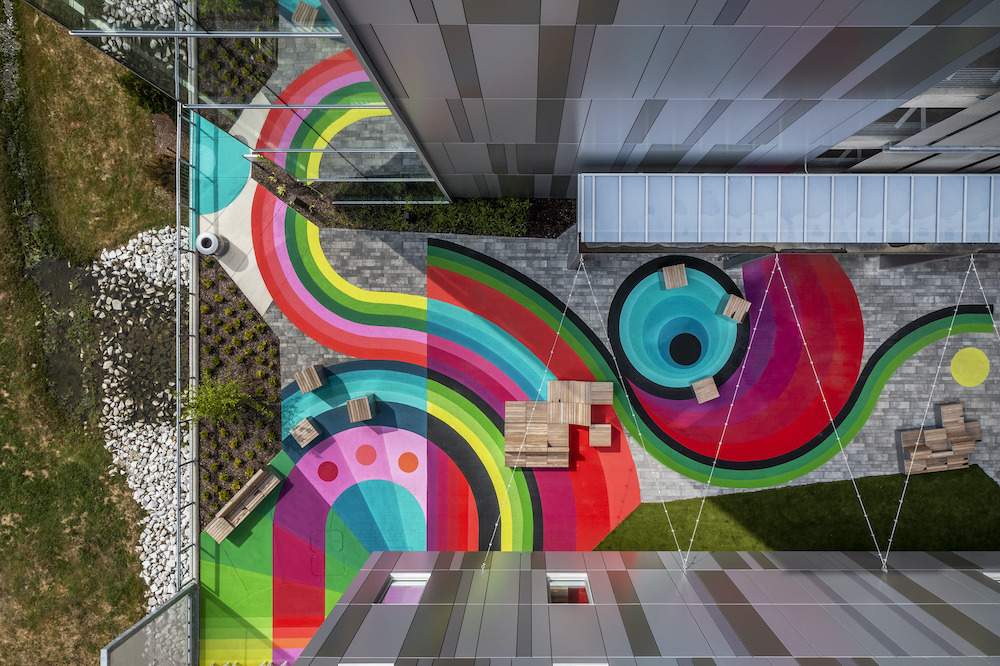
With the adoption of hybrid and flexible work practices, coupled with the enlightened approach of bringing one’s whole self to work, 2023 will be the year of the happy and healthy workplace. Like so many designers before us, we approach each new challenge by seeking supernatural charms that will captivate our audiences. Yet, how do we create spaces that spark joy at the same time? The complexities of a successful, sustainable, and happy workplace are far-reaching beyond the physical experience. When designing for the human experience, the physical space, operational initiatives, and policies must address the cognitive, emotional, and sensory experiences of not only individuals but also the collective response. A well-rounded office should be a place where people not only spend time, but they also flourish.
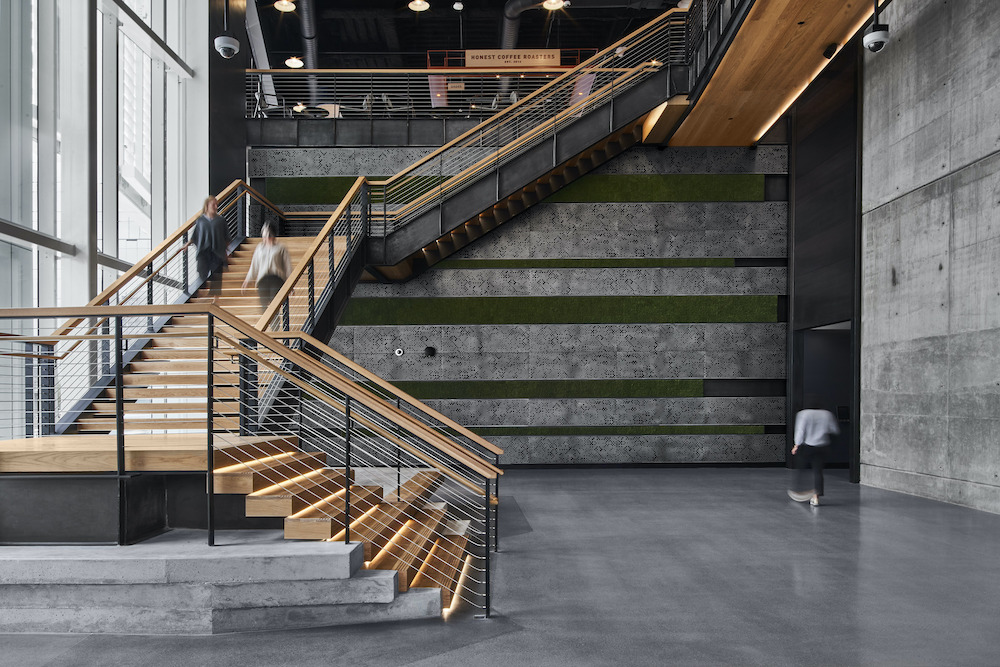
The Modern Workplace
Ever since we saw Anne Hathaway riding a bicycle through her New York City office in “The Intern,” buzz about the detriments of sitting for prolonged periods has compounded. Teetering chairs, exercise balls, treadmill desks, and more, seek to introduce movement throughout the office landscape, yet only a small percentage of building occupants actually make the effort to use them.
The book “Built to Thrive: How to Build the Best Workplaces for Health, Well-Being & Productivity,” states that it’s proven our bodies are designed to sit no more than three hours a day. But, how is that possible when the typical workday is eight hours? Beyond utilizing active furnishings, we must weave movement into the DNA of the modern workplace. By incorporating policies into workplace design that discourage sitting at a single desk for the duration of one’s day, including activity-based working like hot-desking, we can encourage employees to move more frequently.
In recent years, we have seen companies begin to shift away from stuffy, private, office-heavy floor plans to open working environments, which also encourage employees to move periodically throughout the day as needed for private meetings, more impromptu conversations, and collaboration. Ideally, in the early space planning of any project, space should be allocated for walking indoors. Paths and stairways that allow two-directional traffic and connect key office touchpoints, such as the water cooler and the restrooms, create comfortable and uninhibited walking paths where people can move freely with ease. Pathways can also bypass departmental boundaries and create space for unplanned interactions. Placing key services in central, easy-to-find, yet separate locations in a floor plan prompts people to stroll a handful of times repeatedly throughout their day. Some offices have implemented a workplace version of a seventh-inning stretch through a subtle chime or trigger, as a reminder for employees to stand, stretch, and move. Some go as far as to include a measured walking path that employees can follow for walking meetings, or a brief walk to calm nerves, redirect focus, and boost metabolism.
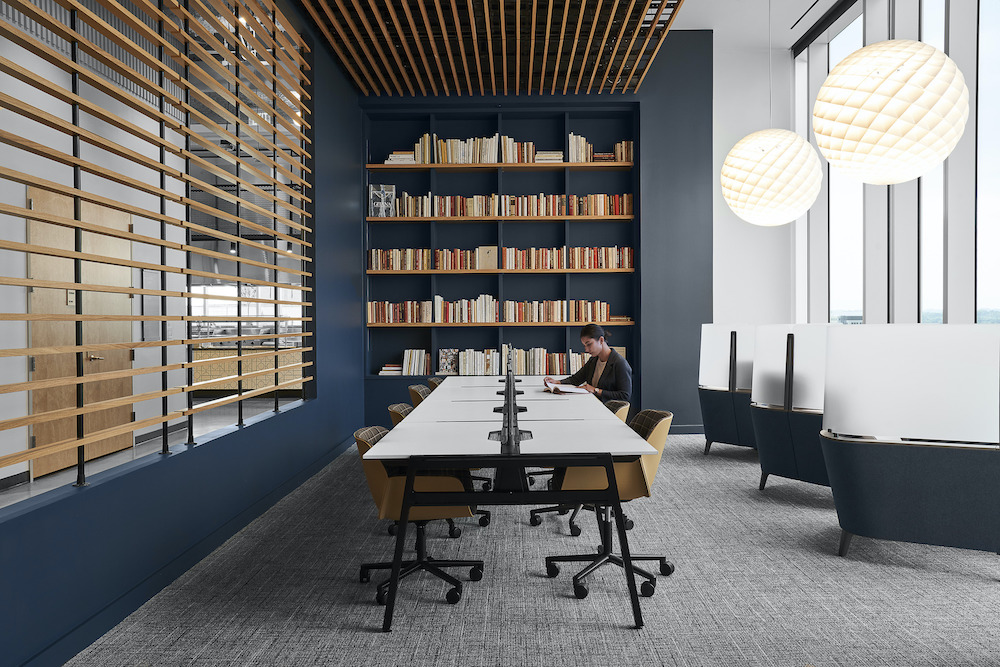
One Size Does Not Fit All
Designing for comfort is essential for employee satisfaction. Unlike the old tale of Goldilocks and the Three Bears, no space is ever quite “just right” because workplaces are not a one-size-fits-all solution. As designing with diversity, equity, inclusion, and belonging have become more top of mind, spaces are optimized for neurodivergent needs and populations. With the introduction of varying furnishings, lighting, acoustics, and levels of finish, employees may choose the spaces that most suit them personally and professionally, as well as for the task at hand.
Ergonomic furnishings are no longer optional because workplaces must go beyond accessibility to provide universal design. For example, picture a petite employee who experiences physical stress because their feet don’t touch the ground and their arms don’t reach their keyboard. I can speak from experience that being able to lower my desk to my seated height is invaluable to my back, my mind, my productivity, and even my ability to sleep well at night.
While, historically, designers have focused heavily on accessible pathways and restrooms, universal designs adapt to the needs of all people to the greatest extent possible. Adjustable furnishings such as BIFMA-certified desks, chairs, and monitor arms are now a baseline requirement for healthy workplaces. Beyond ergonomics, access to daylight, views, and an inviting aesthetic using biophilic patterns can lead to higher satisfaction with the spatial experience. Outdoor work settings designed with protection from the elements and a strong Wi-Fi signal give the healthiest workplaces an edge, with fresh air, light, and opportunities for movement that reinforce employee health.
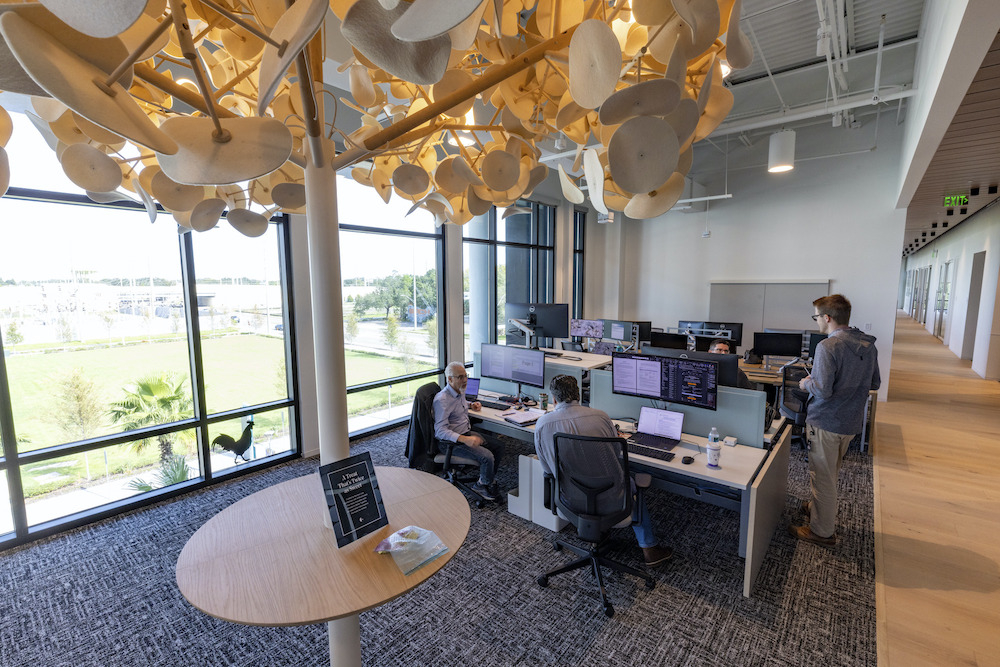
Considering the Cognitive Experience
If humans are equipped with 11 million sensory receptors and surrounded by stimuli, how do we create happy workplaces for all varieties of these neurodivergent populations? By considering cognitive ergonomics and proxemics, designers can create places that feel not only safe and secure but also productive. Upon returning to the office post-pandemic, we’ve all had to relearn what it means to focus in the presence of others. Designing to distinguish spaces for varying uses, such as 2- to 4-foot personal areas for clear focus and confidentiality or, in contrast, public spaces for group interactions anywhere from 12 to 26 feet, allows users to select the spot most suited to their needs. Additionally, transitional spaces that act as visual and acoustic buffers between bustling hubs and quiet zones are critical for comfort.
Clear wayfinding and booking systems take the cognitive experience one step further by minimizing stress and providing predictability so that occupants and visitors may move in and out of a space fluidly. Offering a variety of vantage points with views of activity allowing for passive connection to place, as well as areas of refuge, give employees choice and control, resulting in reduced stress levels and increased performance. The most successful happy workplaces pair these options to move throughout the space alongside policies of trust and autonomy over how work gets done.
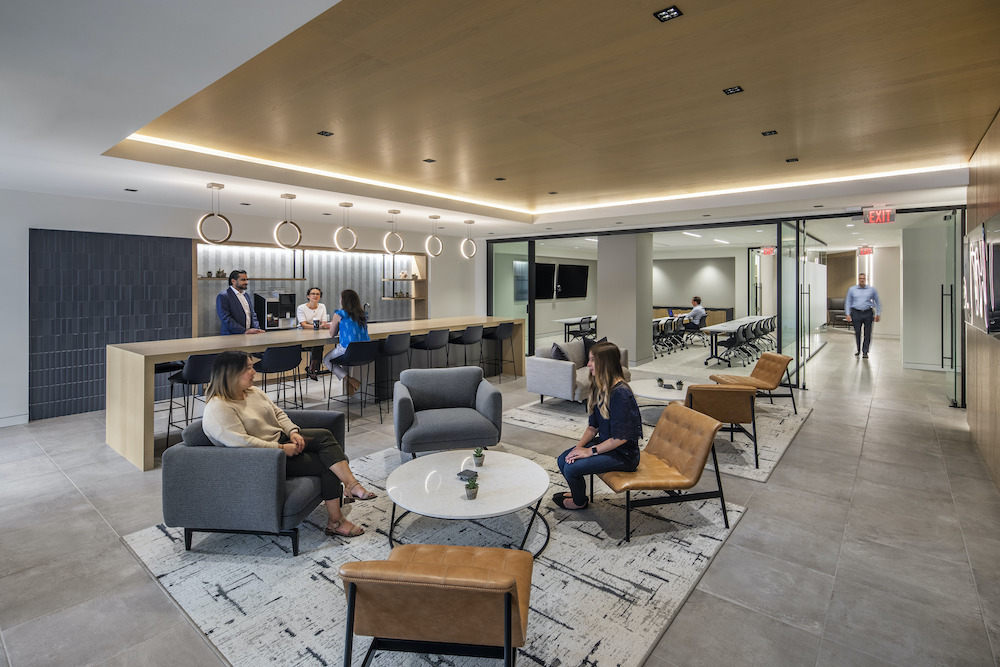
People are the New Amenity
While the pandemic opened the door for a new acceptance of showing emotion in the workplace, our unique responses to space includes bias and involuntary emotional responses beyond our control. With many workplaces opting to implement flexible working policies post-pandemic, even greater effort must be taken to create spaces that evoke energy and vitality. If people are the new amenity, they must be equally considered in the design of shared spaces. Scheduled and unscheduled activities, such as free car wash days, food trucks, drop-in massage rooms, or officewide celebratory events must work alongside strategic space plans to allow spaces to perform at their peak. Beyond designing physical spaces for dining and gathering, consider what recurring events may bring the users together.
In a recent “Alternative Design” podcast episode titled “Ignite Your Senses,” the hosts went so far as to suggest that our sense of taste may be the key to creating a sense of belonging. Just think of how often we gather around tables together and feel fulfilled. How do we recreate that in our office environments? Enhancements and opportunities for the personalization of space, such as the ability to choose color, pattern, stylization, and even smell allow individuals to feel connected by seeing their reflection amidst a larger workplace culture.
Prioritizing Workplace Well-being
Workplace well-being is listed as one of the top five current priorities of the U.S. Surgeon General, with an emphasis on promoting mental health. Providing a workplace that feels safe and secure is foundational to success. Physical work environments designed to protect employees physically and psychologically from stress, while encouraging healthy initiatives and equitable awareness, are proven to demonstrate higher levels of employee satisfaction. As we consider the culmination of these diversified workplaces in 2023, the excitement is palpable. Now it is our turn as workplace innovators to put forward new real-time solutions to the growing demand for the healthy and happy workplace.


Very insightful and is relevant as organizations work to create spaces for enhanced productivity, collaboration happiness and wellness. A keyword you mention is “flourish” and how our environments can help us to reach that ideal goal. I especially enjoyed the recommendation of a come and go massage room!